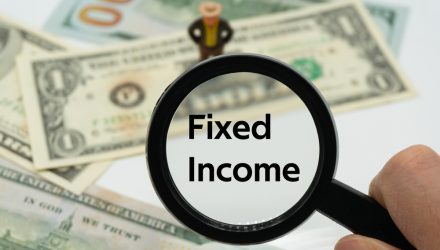VettaFi’s Fixed Income Symposium kicked off Monday morning with a discussion about the state of fixed income. Where will the Fed go next, and what can we learn from bonds’ return to relevance? How should investors be thinking about the yield curve, and will rates be lower or higher a year from now? VettaFi vice chairman Tom Lydon and head of ETF research Todd Rosenbluth hosted the discussion with Bloomberg Intelligence’s senior ETF analyst Eric Balchunas and PIMCO portfolio manager David Braun.
Will Rates Be Higher or Lower a Year From Now?
As with VettaFi’s other webcasts, attendees had the opportunity to respond to a poll – in this case, asking whether rates will be higher or lower a year from now. Two-thirds of respondents chose lower, suggesting that a majority of those responding believe the Fed is indeed close to the end of its rate hikes. With the central bank meeting this week, markets may be seeing the last or almost the last hike in a matter of days.
That prompted a wide-ranging discussion focusing on what’s worked and what might work moving forward in fixed income. According to Balchunas, despite a rush back into equities this summer, fixed income ETFs have taken in 41% of flows this year. Those inflows arrived, he said, despite those ETFs making up only 17% of assets. Treasuries meanwhile took in 65% of that fixed income number, he added, with active taking in 9% of those flows.
“Bond ETFs traded over a trillion in both quarters. I’m old enough to remember when they traded a few hundred billion and that was a big deal,” Balchunas said. “Now they’re trading over a trillion even when the markets aren’t that rough.”
“I think bond ETFs have come a long way to sort of convinced the worriers that they work well,” he added. “I think this year shows that.”
PIMCO’s Macro Outlook for Fixed Income
Where to next, then, in fixed income? According to Braun, PIMCO is seeing a mild recession for the latter part of this year or early next year. The firm’s forecast expects the Fed’s significant tightening to impact lending. According to PIMCO’s research, he said, tight monetary policy usually works with a six to eight-quarter lag – and we’re right “smack in the middle” of that range.
Add in banking stress, “abysmal” new loan growth, and asset liability management at those banks, and PIMCO’s base case indicates that the Fed falls just short of making that soft landing. PIMCO does, however, see a mild recession based on strong consumer and corporate balance sheets.
That means about a one to one and a half percent rise in unemployment and around a one percent GDP drop. He also noted that the firm’s last secular outlook also reminded advisors that the last decade was “unprecedented” for how the Fed and fiscal authorities consistently offered stimulus for the economy. As such, expect a more data-dependent Federal Reserve.
Navigating the Fixed Income Yield Curve
For rates and fixed income, then, Braun sees rates coming down towards the front end of the yield curve. Braun voted “lower” in the poll regarding where rates will be a year from now, but for a core bond manager like him, the ten-year rate proves more interesting. With actively managed, core plus bond funds offering five and a half, almost six percent yields, investors can add portfolio ballast with solid yields from the get-go.
Now, that age-old debate, when you got an inverted yield curve like this is do I get greedy and just grab the highest yielding part of the curve, which is the front end, or do I go out the curve and lock it in longer?” Braun said.
Those who believe that rates are coming down face reinvestment risk on the front end, while those who see rates higher may benefit from a front-end approach. PIMCO has a neutral duration outlook, preferring agency mortgages right now. Taken together, however, Braun reminded investors that they don’t need to go far out in risk for solid yields.
No Need to Be a Hero in Fixed Income
“There’s no reason to go play the role of a hero right now and go out and buy a lot of below investment grade bonds, junk bonds that are closer to default,” Braun said. “You’ve got to be humble in this environment, a lot of uncertainty. Make sure you have liquidity, make sure you have resiliency in your portfolio, and make sure you have dry powder to take advantage of volatility overshoots, which are likely to be inevitable in the coming year.”
Investors can consider ETFs from PIMCO like the PIMCO Active Bond ETF (BOND), which is actively against its benchmark, the Barclays Capital U.S. Aggregate Index. BOND has returned 3.2% YTD, charging 56 basis points for its approach to investment-grade debt.
The replay of the Fixed Income Symposium is now live; registration to view on-demand is available at the link.
For more news, information, and analysis, visit VettaFi | ETF Trends.
